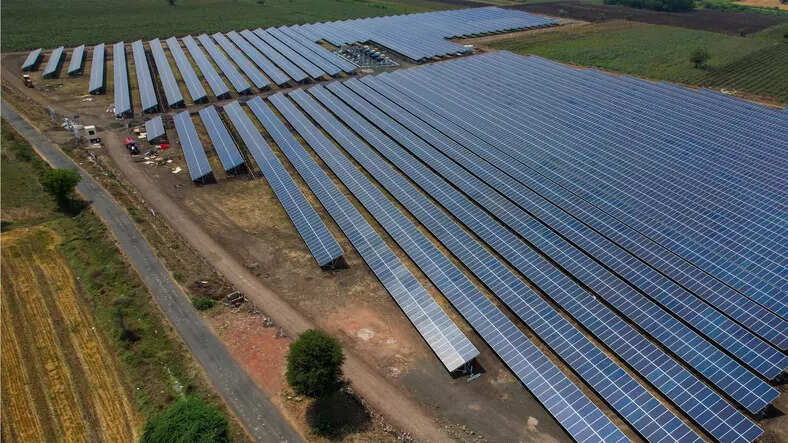[ad_1]

New Delhi: India must resolve issues around land allocation and transmission connectivity for Renewable Energy (RE) projects and also focus more on setting up wind energy generation capacity for the ambitious goal of 50 GW annual RE capacity creation to materialize, Srivatsan Iyer, the global Chief Executive Officer (CEO) of Hero Future Energies, has said.
“The Government’s target of setting up 50 GW capacity annually is commendable. To actualize this, we will have to take care of on ground challenges, especially with regards to evacuation capacity keeping pace with the installation of new projects. Similarly, I am hopeful we will find an efficient solution for land availability and Right of Way (RoW) issues,” Iyer told ETEnergyworld in an interview.
Hero Future Energies is the renewable energy arm of the Hero Group with a portfolio of 4.5 Gigawatt renewable energy projects across India, Ukraine and Vietnam. The company is also backed by global investors including International Finance Corporation (IFC) and KKR.
Iyer said the industry is waiting to see what happens to Green Hydrogen from a policy standpoint. “The recent waiver of the Approved List of Models and Manufacturers (ALMM) requirement for renewable energy production towards green hydrogen in SEZs and EOUs was very positive. We hope to see basic customs duty (BCD) waivers on modules as well, in addition to ALMM waivers,” he said.
The potential of renewable energy in India looks more exciting today than it has been in a while because of various factors, including the new types of complex Round-the-Clock (RTC) tenders for supply of more dispatchable renewable energy, according to Iyer.
While renewable energy from standalone wind or solar power is undoubtedly cheap, costing between Rs 2.60 per unit and Rs 3.40 per unit, converting this to a dispatchable supply involves procuring additional power at rates over Rs 6.50 per unit for significant periods of the day. In comparison, a wind-solar-battery hybrid project where tariffs have been discovered at rates between Rs 5.25 per unit and Rs 5.40 per unit, is more economically competitive and available round-the-clock with 80-90 percent compliance.
“We also need to set up at least 10-15 GW a year of wind energy capacity, against the current trend of 3 GW. This would require adequate Wind Turbine Generator (WTG) infrastructure. On that front, many domestic manufacturers have stepped up capacity to the tune of 15 GW a year and therefore its supply would not be a bottleneck,” Iyer said.
He added that another bottleneck could be the installation infrastructure, including the WTG erection and the availability of cranes and Engineering, Procurement & Construction (EPC) services. “We do not see their pace keeping up for a level of 10-15 GW wind capacity a year. But the most critical aspect, where the industry needs help from the government, is land. The private sector can take care of the rest of the issues,” Iyer said.
On green hydrogen front, the government needs to step in and look at introducing a demand mandate and ease charges like import duty on electrolysers and batteries and also provide some waivers on transmission charges and surcharges etc.
HFE has won five bids for RE projects in the past 12 months. All of these bids are for supply of peak dispatchable renewable power. This is in line with the company’s broad strategy to ensure it participates in these technologically more intensive and complex bids.
“There is already a pipeline of 4-5 additional complex bids that have been announced for the next couple of months. However, the biggest challenge continues to be connectivity. There has been a rush for connectivity especially in areas where wind speed is attractive,” Iyer said. The industry is currently engaged in multiple discussions with MNRE to ensure aligning the timing of scheduled commissioning dates of bids with new evacuation capacity readiness. The idea is to ensure projects are not put in jeopardy because of substation commissioning issues.
HFE is currently executing 2.6 GW capacity projects from the bids it has won. Of this, PPAs have been signed for 900 MW and construction is already underway, even as it waits for PPAs to be signed for the remaining 1.7 GWp of capacity. It expects all of these to be signed by September-October this year.
Iyer informed that the firm is also working on some opportunities in the Commercial and Industrial (C&I) open access space that will also complement project pipeline in the immediate future. It is broadly targeting an annual run rate of around 400 MW every year of C&I open access projects.
[ad_2]
Source link



